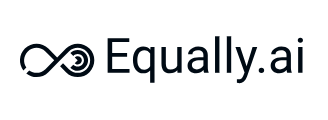Is AI the Game-Changer for Web Accessibility?

Introduction
Web accessibility is the practice of making websites, tools, and technologies usable and accessible for people with disabilities. Web accessibility is important in the digital age, as it ensures that everyone can participate and benefit from online content and services, regardless of their abilities or impairments
Artificial intelligence (AI) is the field of computer science that aims to create machines and systems that can perform tasks that normally require human intelligence, such as reasoning, learning, understanding, and decision-making. AI has the potential to transform various industries, including web development and design, by enabling new possibilities and solutions for complex problems.
In this article, we will explore how AI can help overcome some of the common challenges in web accessibility, and how it can enhance the experience and inclusion of people with disabilities on the web. We will also discuss some examples of AI applications in web accessibility, and what the future might hold for this emerging field.
The Problem: Challenges in Web Accessibility
People with disabilities face various barriers to accessibility on the web, depending on their type and degree of impairment. Some of these barriers include:
- Navigation challenges: People with visual, motor, or cognitive disabilities may have difficulty navigating through websites that are not designed with keyboard support, clear structure, consistent layout, or meaningful labels. They may also struggle with websites that have complex or dynamic content, such as pop-ups, carousels, or animations.
- Comprehension challenges: People with auditory, visual, or cognitive disabilities may have difficulty comprehending websites that do not provide alternative formats or modalities for their content, such as captions, transcripts, audio descriptions, or text alternatives for images and videos. They may also struggle with websites that use unclear language, jargon, or abbreviations.
- Interaction challenges: People with speech, motor, or cognitive disabilities may have difficulty interacting with websites that do not provide accessible forms, controls, feedback, or error handling. They may also struggle with websites that require timed responses, complex gestures, or voice input
These challenges are not only frustrating and limiting for people with disabilities but also costly and detrimental for businesses and society. According to a report by The World Bank, people with disabilities represent about 15% of the world’s population and account for an estimated $8 trillion in annual disposable income. By excluding people with disabilities from accessing their websites, businesses are missing out on a large and valuable market segment. Moreover, by neglecting web accessibility standards and guidelines (such as WCAG 2), businesses are exposing themselves to legal risks and reputational damages
Therefore, there is an ongoing need for improvement in web accessibility, especially as online content grows and evolves. However, achieving web accessibility is not a trivial task. It requires a combination of technical skills, design principles, user testing, and quality assurance. It also requires constant monitoring and maintenance to ensure compliance and compatibility with changing technologies and user needs.
The Potential of AI in Web Accessibility
AI has the potential to overcome many of these challenges by automating or augmenting some of the tasks involved in creating and maintaining accessible websites. AI can also provide new ways of enhancing the user experience and inclusion of people with disabilities on the web.
Some of the forms of AI that can be applied to web accessibility include:
1. Machine learning: Machine learning is a branch of AI that enables computers to learn from data and improve their performance without explicit programming. Machine learning can be used to analyze large amounts of data and extract patterns, insights, or predictions that can help improve web accessibility. For example,
- Machine learning can be used to generate alternative text for images and videos based on their visual content or context.
- Machine learning can classify web pages according to their accessibility level or identify accessibility issues based on predefined criteria.
- Machine learning can be used to personalize web content or interfaces based on user preferences or needs.
2. Natural language processing: Natural language processing (NLP) is a branch of AI that enables computers to understand and generate natural language (such as text or speech). NLP can be used to process and produce accessible content or communication for people with disabilities. For instance:
- NLP can be used to provide captions or transcripts for audio or video content based on speech recognition or synthesis.
- NLP can be used to provide audio descriptions for visual content based on text summarization or generation.
- NLP can be used to provide voice or chat-based interaction for web users based on natural language understanding or generation.
3. Computer vision: Computer vision is a branch of AI that enables computers to perceive and interpret visual information (such as images or videos). Computer vision can be used to enhance the perception and comprehension of web content for people with disabilities. For example,
- Computer vision can be used to provide magnification, contrast, or color adjustment for web content based on image processing or enhancement.
- Computer vision can be used to provide facial recognition, emotion detection, or gesture recognition for web users based on image analysis or recognition.
- Computer vision can be used to provide object recognition, scene description, or navigation assistance for web users based on image understanding or generation.
Case Studies of AI Applications in Web Accessibility
There are already some examples of how AI is being used to improve web accessibility in various domains and contexts. Here are some of them:
Equally AI Flowy

Equally AI Flowy is an AI tool that helps web developers create accessible websites without coding. It uses machine learning to analyze web content for accessibility issues, generate WCAG-compliant code snippets, suggest best practices, and provide feedback. It also uses natural language processing to generate alternative text for images automatically. Additionally, it offers AI-driven captioning and transcription services, machine learning algorithms for image recognition and alt text generation, AI chatbots for better customer service, and predictive text and voice recognition software for easier navigation and interaction.
However, Equally AI Flowy may not be able to detect and fix all accessibility issues, especially those that require human judgment or creativity. It may also generate inaccurate or inappropriate alternative text or captions for some images or audio content, depending on the quality and context of the content.
Sounds appealing? Try Equally for free 👉
Google Live Caption
Google Live Caption is an AI-driven feature that provides real-time captions for any audio or video content on Android devices. Google Live Caption uses natural language processing and machine learning to transcribe speech to text, even without an internet connection. Google Live Caption helps users with hearing impairments to access any online content that has sound, such as podcasts, videos, or live streams.
However, Google Live Caption may not work on some devices or apps that do not support the feature. It may also produce inaccurate or incomplete captions for some audio or video content, depending on the clarity and complexity of the speech.
Microsoft Seeing AI

Microsoft Seeing AI is a mobile app that uses AI to help people with visual impairments navigate the world around them. It uses machine learning and image recognition to describe objects, people, text, colors, and scenes through voice feedback. Microsoft Seeing AI also uses natural language processing to read and translate text from various sources, such as signs, documents, or screens.
However, Microsoft Seeing AI requires an internet connection and a camera to function properly. It may also fail to recognize or describe some objects, people, text, colors, or scenes correctly, depending on the lighting and angle of the camera.
IBM Watson Assistant

IBM Watson Assistant is an AI-powered chatbot platform that helps businesses create conversational interfaces for their websites and apps. This assistant uses natural language processing and machine learning to understand user queries, provide relevant information or services, and learn from user feedback. It also helps users with disabilities to access web content and services more easily and efficiently, by providing a human-like and personalized interaction.
However, IBM Watson Assistant may not be able to answer all user queries or provide all information or services that users need. It may also misunderstand or misinterpret some user queries or feedback, depending on the language and tone of the user.
Each of these examples demonstrates the effectiveness of AI in improving web accessibility, by providing solutions that are accurate, fast, convenient, and adaptable. However, each example also has some limitations, such as requiring an internet connection, device compatibility, user consent, data privacy, and ethical considerations.
Future Implications and Predictions
AI-enhanced web accessibility is likely to become more prevalent and sophisticated in the future, as new technologies and innovations emerge. Some of the possible implications and predictions for the future of AI-enhanced web accessibility are:
- Improved screen reading capabilities: Screen readers are software applications that help users with visual impairments access web content by converting text to speech or braille. Screen readers could be improved by using AI technologies such as natural language processing and machine learning to provide more natural and expressive speech synthesis, better context and sentiment analysis, and more intelligent navigation and interaction features.
- AI-driven website personalization: Website personalization is the process of tailoring web content and design to suit the needs and preferences of individual users. Website personalization could be enhanced by using AI technologies such as machine learning and natural language processing to provide more customized and accessible solutions for users with disabilities, such as adjusting font size, color contrast, layout, language, and content based on user profile, behavior, and feedback.
- More inclusive digital world: A more inclusive digital world is a vision where everyone can access and benefit from the web equally, regardless of their abilities or disabilities. A more inclusive digital world could be achieved by using AI technologies to create more accessible and user-friendly websites and online content, by following the principles of universal design, user-centered design, and participatory design.
Conclusion
AI has the potential to dramatically improve web accessibility by overcoming many of the challenges that people with disabilities face on the web. AI can help create more accessible and user-friendly websites and online content by automating tasks, enhancing features, and providing personalized solutions. There are already many examples of how AI is being used to improve web accessibility in practice. Still, there are also many opportunities for further exploration and adoption of AI technologies to create a more inclusive digital world.
Enjoyed this article? Feel free to share this knowledge!
Leave a Reply